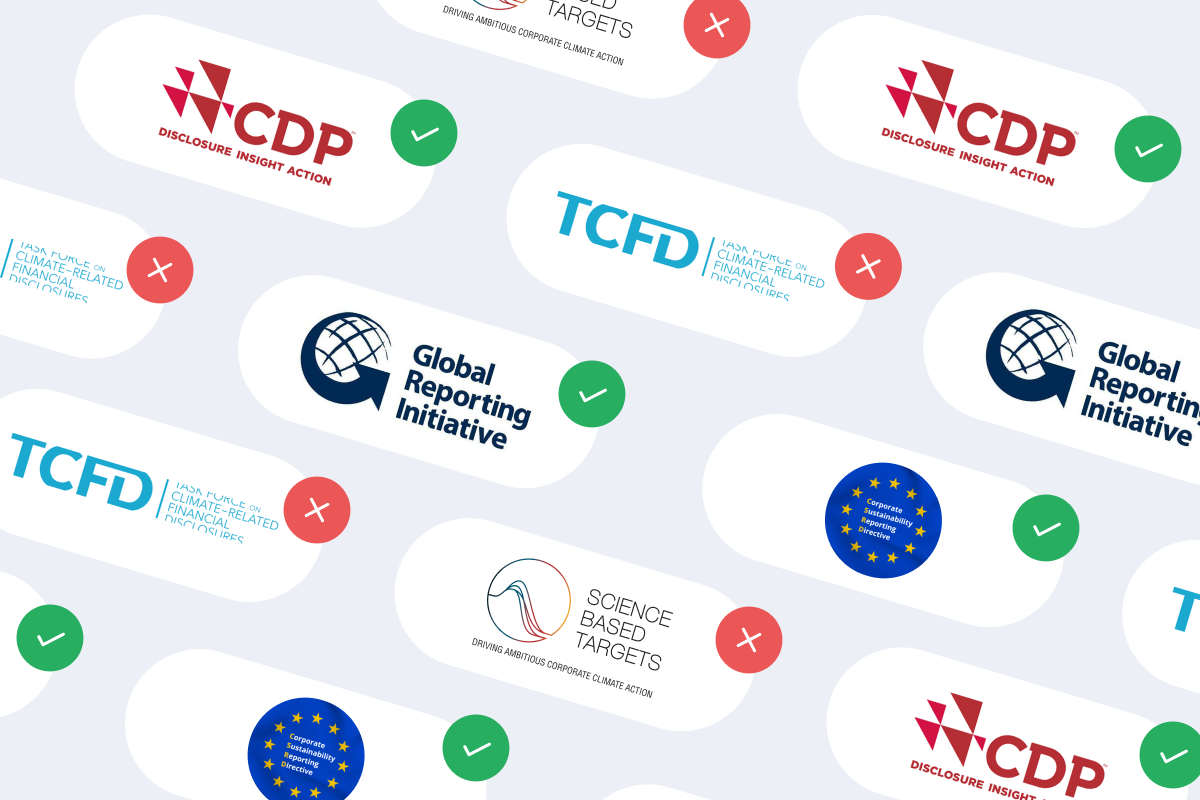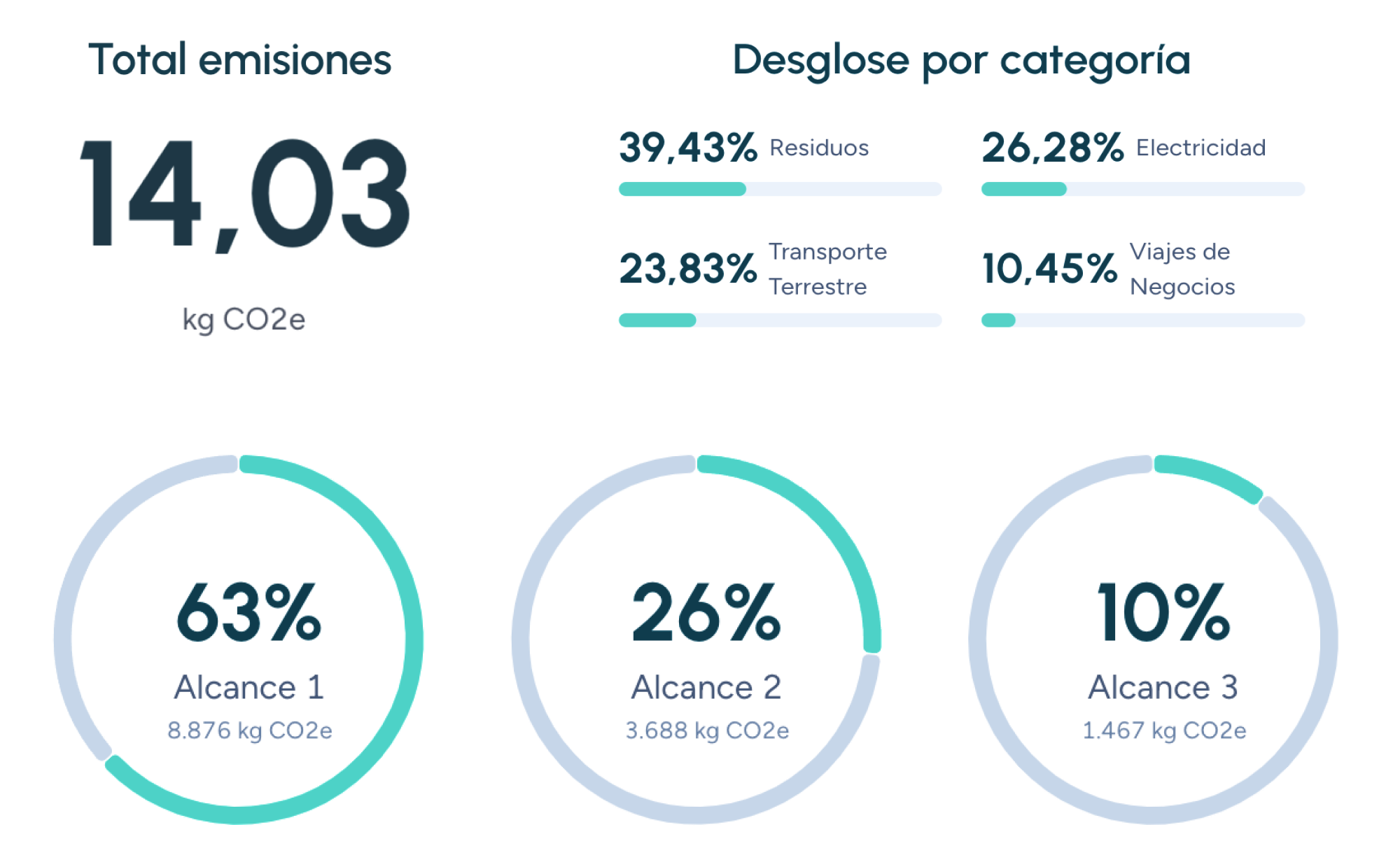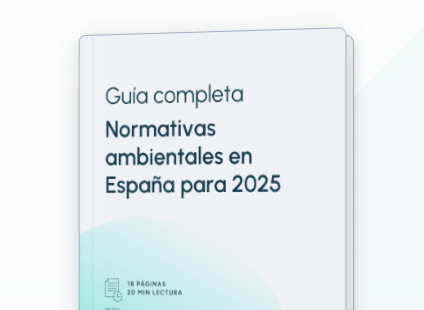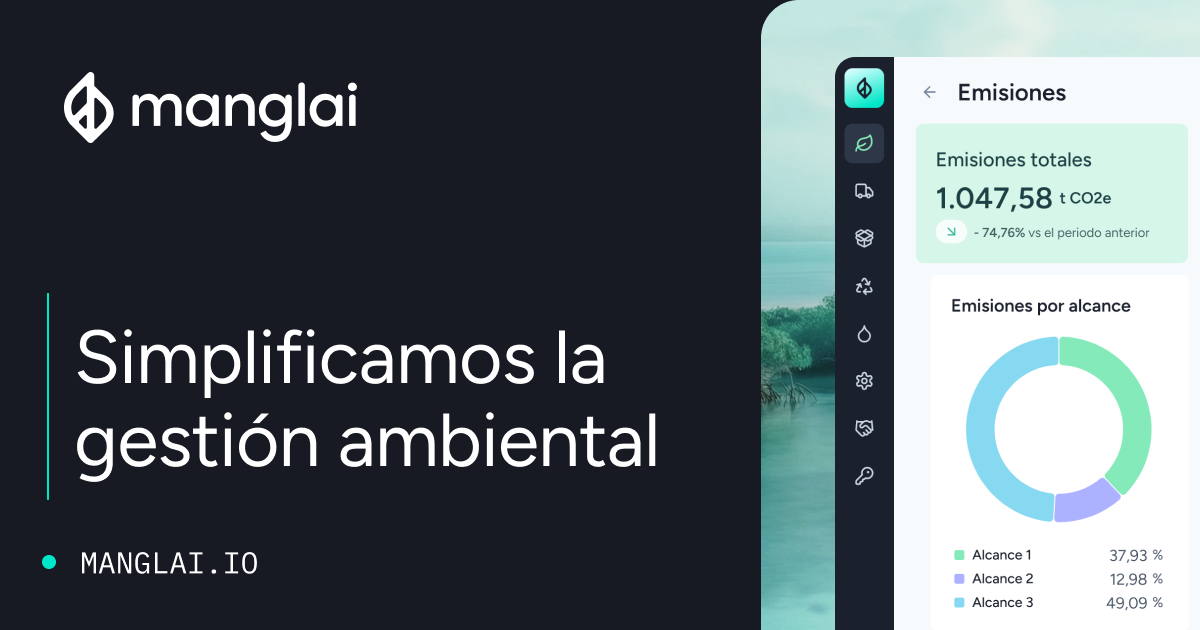Back to the blog
Core climate concepts
Carbon Footprint: What is it and how is it calculated?
Paula Otero
Environmental and Sustainability Consultant
In our daily lives, we release a series of gases known as greenhouse gases (GHG) into the atmosphere that are essential for life as we know it, as they help regulate Earth's temperature. However, the problem lies in excess: a high concentration of these gases in the atmosphere causes an uncontrolled increase in global temperature, leading to the phenomenon we know as global warming.
In this context, awareness of our carbon footprint becomes crucial, both at individual and corporate levels. The goal: to achieve carbon neutrality, a scenario where generated emissions are offset by the atmosphere's absorption capacity.
In this article, we'll explain what a carbon footprint is, the different types that exist, and how we can calculate it to implement reduction strategies.
What is a carbon footprint?
A carbon footprint is defined as the total amount of greenhouse gases (GHG) emitted into the atmosphere as a direct or indirect consequence of the activities of an individual, organization, event, or product over a specific period, typically one year.
Why is it important to measure carbon footprint?
Far from being a mere numerical calculation, carbon footprint stands as a key strategic tool for understanding our environmental impact. Measuring carbon footprint allows us to:
- Understand our impact: identify and quantify GHG emission sources, differentiating between direct emissions, such as those generated by fossil fuel use in our facilities, and indirect emissions, associated with our supply chain, material transportation, etc.
- Establish a baseline: have a starting point from which to measure the effectiveness of implemented emission reduction strategies.
- Identify improvement opportunities: focus efforts on areas or processes where emission reduction can be most significant.
- Comply with current regulations: more and more regulations require companies to measure and report their GHG emissions.
- Improve brand image: companies that demonstrate their commitment to the environment enjoy better perception from consumers.
What are greenhouse gases?
Although carbon dioxide (CO₂) is the most well-known GHG due to its abundance and long atmospheric lifetime, carbon footprint is not limited to this gas alone. Other gases such as methane (CH4), nitrous oxide (N₂O), hydrofluorocarbons (HFCs), perfluorocarbons (PFCs), and sulfur hexafluoride (SF6) also contribute to the greenhouse effect.
Carbon footprint measurement takes into account the Global Warming Potential (GWP) of each gas, an index that compares a gas's heat-trapping capacity in the atmosphere relative to CO₂.
Types of carbon footprint
It's necessary to differentiate between the different types of carbon footprint that exist:
1. Personal carbon footprint
This category encompasses GHG emissions generated by an individual's daily activities, such as household energy consumption, mobility, food, and waste management.
2. Product carbon footprint
This footprint evaluates the environmental impact of a product throughout its entire life cycle, from raw material extraction, through production, distribution, use, and until the end of its useful life (including its management as waste).
3. Event carbon footprint
Large events such as concerts, festivals, or sporting competitions generate considerable environmental impact due to factors like attendee transportation, facility energy consumption, or waste generation. Calculating an event's carbon footprint allows for implementing measures to minimize its impact.
4. Corporate carbon footprint
This category, also known as organizational carbon footprint, measures GHG emissions generated by all activities of a company, including its direct operations (Scope 1 emissions) and indirect operations (Scope 2 and 3 emissions).
At this point, tools like Manglai, our specialized software solution for measuring and managing carbon footprint, become strategic allies for companies. Through our platform, based on GHG Protocol and ISO 14064 standards, companies can:
- Calculate their carbon emissions across all scopes (1, 2, and 3) accurately and automatically
- Identify reduction opportunities through detailed analysis of their emissions data
- Define customized action plans to achieve their decarbonization goals
- Access a network of decarbonization partners with exclusive discounts
- Generate auditable sustainability reports to comply with current regulations and communicate their environmental commitment
How is carbon footprint calculated?
Carbon footprint calculation, regardless of its type, is based on data collection and subsequent analysis using standardized methodologies:
- Scope definition: the first step is determining which activities, processes, or products will be included in the calculation.
- Data collection: accurate data must be collected on energy consumption, fixed and mobile source emissions, travel, waste management, etc.
- Converting data to CO₂ equivalent emissions: collected data is converted to CO₂ equivalent units (CO₂e) using specific emission factors for each activity and greenhouse gas.
- Results analysis: once the carbon footprint is calculated, an analysis is performed to identify main emission sources and establish a baseline.
- Definition of reduction strategies: based on results analysis, measures are defined and implemented to reduce GHG emissions.
- Monitoring: carbon footprint measurement should be a continuous process that allows evaluating the effectiveness of implemented measures and introducing improvements constantly.
Tools for calculating and managing carbon footprint
Calculating carbon footprint might seem complex, especially for large companies with large-scale operations. However, technology has greatly facilitated this process.
Platforms like Manglai simplify carbon footprint management thanks to:
- Data collection automation: integration with ERP systems, fleet management platforms, travel management tools, etc.
- Automatic emissions calculation: updated emission factors and standardized calculation methodologies.
- Data analysis and custom reports: data visualization through interactive dashboards, reports adapted to each user's needs, and generation of auditable reports.
- Scenario simulation: evaluation of the impact of different emission reduction measures.
- Reduction project management: tools for planning, implementing, and tracking reduction actions.
At Manglai, we provide companies with the technology and knowledge necessary to measure, manage, and reduce their GHG emissions efficiently. The path to decarbonization is a long-term race in which we all must participate.
Paula Otero
Environmental and Sustainability Consultant
About the author
Biologist from the University of Santiago de Compostela with a Master’s degree in Natural Environment Management and Conservation from the University of Cádiz. After collaborating in university studies and working as an environmental consultant, I now apply my expertise at Manglai. I specialize in leading sustainability projects focused on the Sustainable Development Goals for companies. I advise clients on carbon footprint measurement and reduction, contribute to the development of our platform, and conduct internal training. My experience combines scientific rigor with practical applicability in the business sector.
Content
Companies that trust us

Dow Jones Sustainability Index: What it means for your business
Learn how the DJSI ranks companies and why it matters for corporate sustainability strategies.
07 May, 2025
The Environmental Performance Index: Measuring corporate impact
Learn how businesses can use the EPI to assess environmental impact and sustainability performance.
14 April, 2025
Carbon Neutral vs. Net Zero: What’s the difference?
Understand the key differences between carbon neutrality and net zero goals.
31 March, 2025
Guiding businesses towards net-zero emissions through AI-driven solutions.
© 2025 Manglai. All rights reserved
Política de Privacidad


